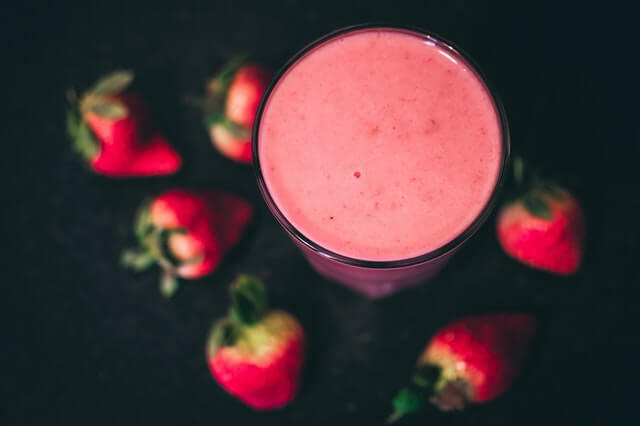BCAA's are amino acids with a special biochemical structure. They are one of the 8 essential amino acids that the human organism does not produce itself. They have a reputation among athletes and fitness-conscious people for promoting muscle growth and athletic performance.
That's why strength athletes in particular often consume protein products with these amino acids in high doses. Critical voices on the topic see potential risks with isolated and excessive intake. Among other things, they assume that BCAAs could be carcinogenic. What should you know about these aminos? How do you best use products of this type?
Valine, leucine and isoleucine - particularly structured amino acids
The abbreviation BCAA stands for the English name Branched-Chain Amino Acids and the protein building blocks valine, leucine and isoleucine . This technical term describes - just like the German terminology branched-chain amino acids - the special structure of these aminos. The molecules branch out.
The aminos, like 5 other protein building blocks, must be taken in again and again with food. The human organism cannot form them itself. That's why they are also called essential amino acids . These protein construction sites have special properties, and not just in terms of their structure.
Occurrence and demand of V aline, leucine and isoleucine
Basically , valine, leucine and isoleucine are contained in all amino acid foods . A large proportion of all amino acids contained in the human body are branched-chain aminos. Their share is 35-40%. There are large parts in the muscles. These proteins make up 14-18% of the muscles .
BCAAs are primarily metabolized in the muscles . This distinguishes them from many other amino acids that are broken down by the liver. Because of this peculiarity, experts view them primarily as energy suppliers. So far, only recommendations and estimates exist for the required values. These are not proven by scientific studies.
For example, for the daily intake of ...
- Valine between 11 mg and 14 mg/kilogram body weight
- Leucine between 11 mg and 13 mg/kilogram body weight
- Isoleucine 10 mg/kilogram body weight
recommended.
The connection to body weight makes it clear that there can be individual differences in requirements. It has not yet been conclusively clarified whether factors such as physical strain and stress can also increase daily requirements.
The World Health Organization (WHO) recommends a minimum total intake of valine, leucine and isoleucine in combination of 15 mg per day per kilogram/body weight.
In some studies, higher daily recommendations of up to 65 mg/kilogram/body weight are given.

Occurrences in foods of valine, leucine and isoleucine
The branched-chain aminos are found in oatmeal, peanuts, lentils, shrimp and chicken, among other things. They are found in plant and animal foods. In some cases, amounts of over 3000 milligrams per 100 g of food are reached.
For example, the values for leucine in Parmesan cheese are 3500 mg per 100 g of product. The frequent occurrence of BCAAs in foods supports the opinion of many nutrition experts. They believe that the need for these amino acids can easily be met with normal eating habits.
Valine, leucine and isoleucine in nutritional supplements
The special protein building blocks are often components of nutritional supplements and supplements for athletes. They are usually offered in powder form, but also as capsules or tablets . Sports drinks are also enriched with them.
There are solo products that only contain valine, leucine and isoleucine, mostly in high doses. In addition, the aminos are also part of products with all essential amino acids in combination.
Is there a lack of Valine, leucine and isoleucine?
It has not yet been conclusively proven that we can have a deficiency specifically in BCAAs . This is conceivable if there is a general amino acid deficiency . The deficiency would then relate to all essential amino acids.
It has not yet been scientifically proven whether possible increased requirements in connection with strength training or endurance sports can promote deficiency states. However, a hidden glutamine deficiency could also lead to deficiencies in protein building blocks . Glutamine is an amino acid that is intrinsically important for muscle and cell health.
The human body produces them itself. One possibility is the formation using leucine, valine and isoleucine. If the organism generally does not produce enough glutamine, the branched-chain aminos may be used up for glutamine formation . This could also lead to a shortage of these building blocks.
Areas of influence in the human organism
The branched-chain building blocks have functions and involvement in various physical processes.
Among other things, they influence:
- the development of muscles and our mobility.
- various metabolic processes.
- the immune system.
- the regulation of blood sugar.
- the production of hormones and their release.
- Skin, hair and nails.
Metabolism
The branched-chain aminos are mainly broken down in the muscles . That's why they are considered a source of energy, especially during exercise. The exact connections are not yet clearly clarified.
Among other things, isoleucine and leucine primarily increase the release of the hormone insulin. The cells are stimulated to absorb more sugar from the blood. This can then be available to the muscles as energy.
Energy suppliers and blood sugar reduction
The connections between the increased release of insulin and the provision of more energy for the muscles are currently still the subject of scientific research. In some studies, the aminos also show a potential for lowering blood sugar.
However, there are still many unanswered questions about the entire metabolic processes.
Who benefits from amino acids?
Valine, leucine and isoleucine are components of protein-containing foods in every normal diet. The three protein building blocks aroused particular interest among athletes at an early stage. The background is their possible function as an energy supplier, primarily in the muscles.
But doctors and scientists have also been working on BCAA for some time. They have discovered potential therapeutic areas of influence for aminos in certain diseases. The question always arises as to who could benefit from an additional intake of BCAAs .

performance increase
Various studies show a possible performance-enhancing effect. This is specifically about the subjective feeling of exhaustion. It was shown here that the aminos could extend the time until the exhaustion limit was reached during endurance exercise by 17%.
It is still unclear whether this indicates a general performance-enhancing effect of the protein building blocks .
Muscle building
Part of the function of the 3 building blocks is to stimulate muscle growth . They form part of the protein substance that muscles need to grow . However, scientists have so far only succeeded in proving that the aminos activate certain enzymes for muscle growth.
Use in medicines for muscle atrophy
In the medical field, the building blocks are used for diseases that cause muscle loss. This applies, for example, to muscle atrophy. High doses are sometimes used here under medical supervision.
Liver cirrhosis and intensive care medicine
BCAAs are also known to have positive effects on liver shrinkage and in intensive care to provide energy. Many connections continue to be the subject of scientific research.
Lose weight with branched chain amino acids?
It is not yet certain whether valine, leucine and isoleucine can support weight loss . A study showed that the study participants were able to reduce their risk of becoming overweight with a targeted daily intake.
Whether other factors, such as a generally high-protein diet, were also decisive is still a matter of debate.
An Australian study also sees a risk that the branched-chain aminos will have a negative impact on mood. This could lead to an increased intake of calories.
Application experiences and insights
When it comes to potential negative effects of the 3 amino acids in this section, the type of application, the duration of intake and, above all, the dosage could play a major role. The focus of attention is primarily on the isolated use of BCAAs .
Users have many questions : Is it better to include all essential aminos in one product ? What is the maximum length of time that the branched-chain building blocks should be supplied in isolation? Does it depend on when it is taken and food combinations? Are carcinogenic effects to be expected ? How do carcinogenic developments appear in connection with aminos?
Individually or in combination with other amino acids?
Many athletes swear by products that contain isolated valine, leucine and isoleucine. They hope for an increase in performance and muscle building . There is no definitive scientific knowledge on this application. In the normal diet, the 3 amino acids are found in the company of other proteins.
Dietary supplements are also offered that contain all of the essential amino acids in normal dosages. There is one thing you should take into account : If carcinogenic potential actually exists in the branched-chain building blocks, the danger increases when consumed in isolation in high doses.

Dosage questions
There is currently no clear information available as to the dosage in which isolated products containing BCAAs are recommended . Specialist societies such as the Federal Office for Risk Assessment therefore rightly point out the considerable uncertainties in dosage recommendations.
Anyone who stays within the limits recommended by the WHO and other nutrition experts should always be on the safe side. This particularly applies to combination products in which the branched-chain aminos are embedded in all essential amino acids .
Duration of intake
There is also no reliable data on the maximum duration of intake without interruption. Many studies are currently working with intake times of a few weeks . Here too, potentially carcinogenic processes can have a greater effect over a longer period of time.
BCAA carcinogenic? Side effects and health risks
Dietary supplements are not medicines. There are no known side effects in the narrower sense of dietary supplements with leucine, valine and isoleucine. Nevertheless, particularly high doses can demonstrably lead to negative effects when taken in isolation .
When it comes to the risks to health, a lot is still unclear. There are occasional reports of direct negative effects such as nausea and fatigue from intakes of 60 mg of the isolated 3 amino acids. The Federal Office for Risk Assessment, among others, points this out.
A current study from the Australian University in Sydney indicates a possible life-shortening effect when taking isolated aminos.
Influence on tryptophan, effect on tyrosine
Tryptophan and tyrosine are important neurotransmitters. They have to get into the brain and cross the blood-brain barrier. High doses of branched-chain aminos can hinder this process. This can affect a wide variety of functional areas.
Among other things, tryptophan is the precursor to the messenger serotonin. This substance, in turn, is involved in the formation of melatonin - the sleep hormone. Serotonin deficiencies can have serious consequences.
Diabetes mellitus II and cardiovascular diseases
There are initial indications that increased BCAA levels in the blood could be associated with the development of diabetes mellitus II and cardiovascular diseases. These assumptions have not yet been scientifically proven.
Are BCAAs carcinogenic?
In animal studies , increased intake of branched-chain amino acids shows a carcinogenic effect .
Carcinogenic effects could be associated with the intake of isolated protein building blocks in high doses. It is still unclear when the intake has a carcinogenic effect, whether it depends on a certain duration of intake and other circumstances.
However, expert committees such as the Federal Office for Risk Assessment take the first indications of these health risks seriously. In any case, it cannot currently be ruled out that isolated intake in high doses can have a carcinogenic effect.
Currently, no general statements can be made as to whether the isolated intake of valine, leucine and isoleucine in particular could endanger our health. Previous use in the therapeutic, medical field has not yet been able to deepen the database on possible health risks.

BCAA: It depends on the right dose and application!
Research into potentially carcinogenic substances always presents scientists with major challenges. This is all the more true if potentially carcinogenic substances are normal and even essential food components. This is the case with BCAA's . In any case, the dose makes the poison.
You should remain careful when consuming these amino acids through supplements. The dosage and application are likely to be crucial. There is also a lack of scientific evidence for clear performance-enhancing and muscle-building effects of these amino acids.
A certain degree of restraint when dosing, especially for products with isolated protein building blocks, may be recommended. You may ask yourself whether you want to take valine, isoleucine and leucine in isolation. You may make a better choice with a sensibly dosed BCAA supplement that contains all the essential protein building blocks.
Likewise with a diet that is as varied as possible and different sources of protein. In any case, this applies until it is clearly established whether isolated BCAAs can have a carcinogenic effect .
